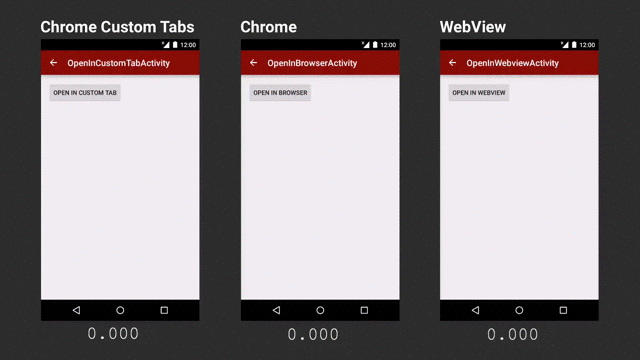Google released Chrome 45 for Windows, Mac, Linux, and Android yesterday, and today we’re learning that the Android update includes support for a new feature called Chrome custom tabs. You can download the new Chrome version now from Google Play, but you won’t see Chrome custom tabs right away — today’s news is primarily aimed at developers. That said, Google has partnered with a few apps already — Feedly, The Guardian, Medium, Player.fm, Skyscanner, Stack Overflow, Tumblr, and Twitter will support custom tabs “in the coming weeks.”
Google first shared details about Chrome custom tabs when it unveiled Android Marshmallow at its I/O conference in May, but to be clear, the feature is available to all Android versions that can run Chrome 45 (Jelly Bean and up). Instead of dumping the user into the browser or using a WebView, developers can use Chrome custom tabs to leverage all of the browser’s features while still maintaining the app’s design. Features like automatic sign-in, saved passwords, Tap to Search, and autofill are all available.
Here is how Chrome custom tabs work when developers build the functionality into their app. When the user opens a link in an app, it loads in a Chrome custom tab. This new view appears native to the app, as developers are essentially customizing Chrome’s look and feel to match the app, including changing the toolbar color, adjusting the transition animations, and even adding custom actions to the toolbar that let the user interact with the app. On top of all this, content loads more quickly.
In fact, Google says custom tabs are optimized to load faster than WebViews and traditional methods of launching Chrome. Because apps can prefetch pages in the background, they appear to load nearly instantly when the user navigates to them.
Chrome’s security features, including multiprocess architecture and permissions model, are also available. Custom tabs use the same cookies as Chrome, meaning users stayed signed into sites.
Google explains the issue that Chrome custom tabs is trying to solve:
Android app developers face a difficult tradeoff when it comes to showing web content in their Android app. Opening links in the browser is familiar for users and easy to implement, but results in a heavy-weight transition between the app and the web. You can get more granular control by building a custom browsing experience on top of Android’s WebView, but at the cost of more technical complexity and an unfamiliar browsing experience for users.
If you’re a developer who finds the above intriguing, check out the Chrome custom tabs developer guide.



